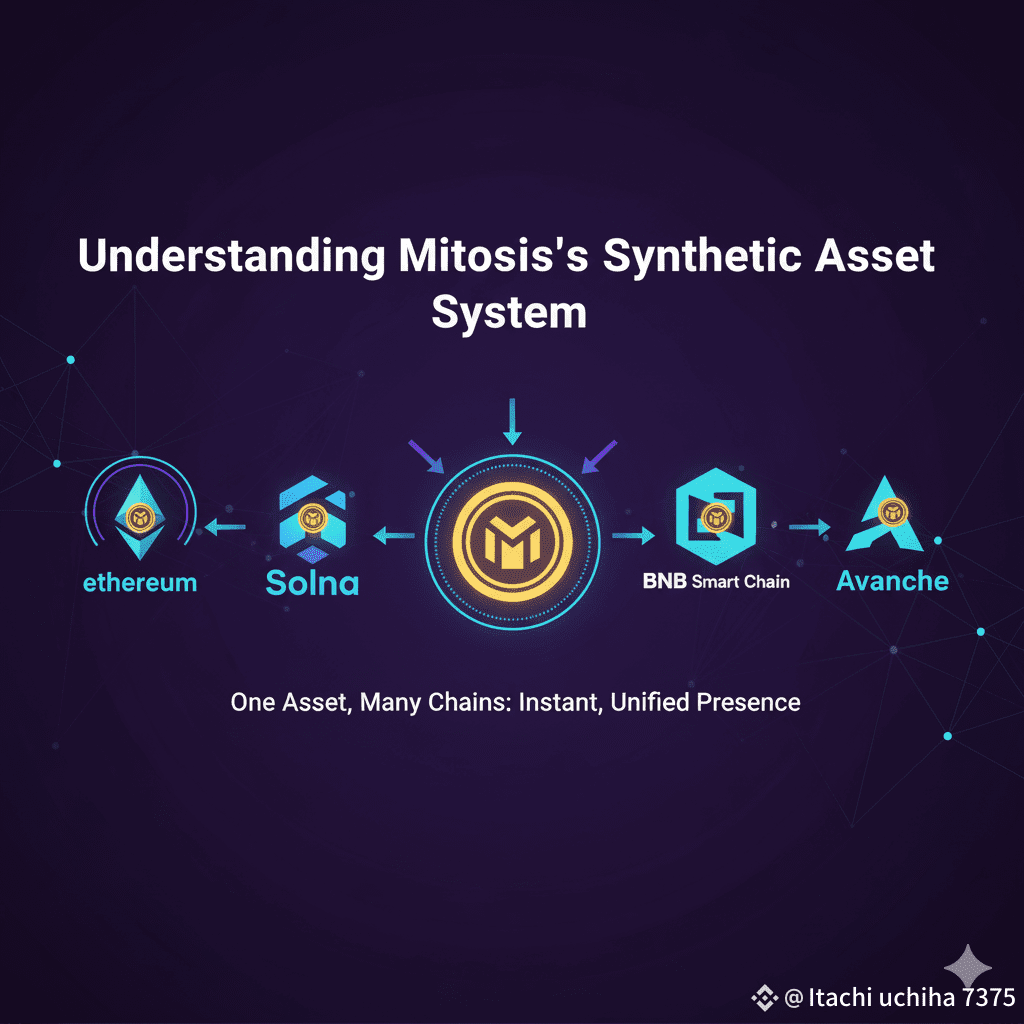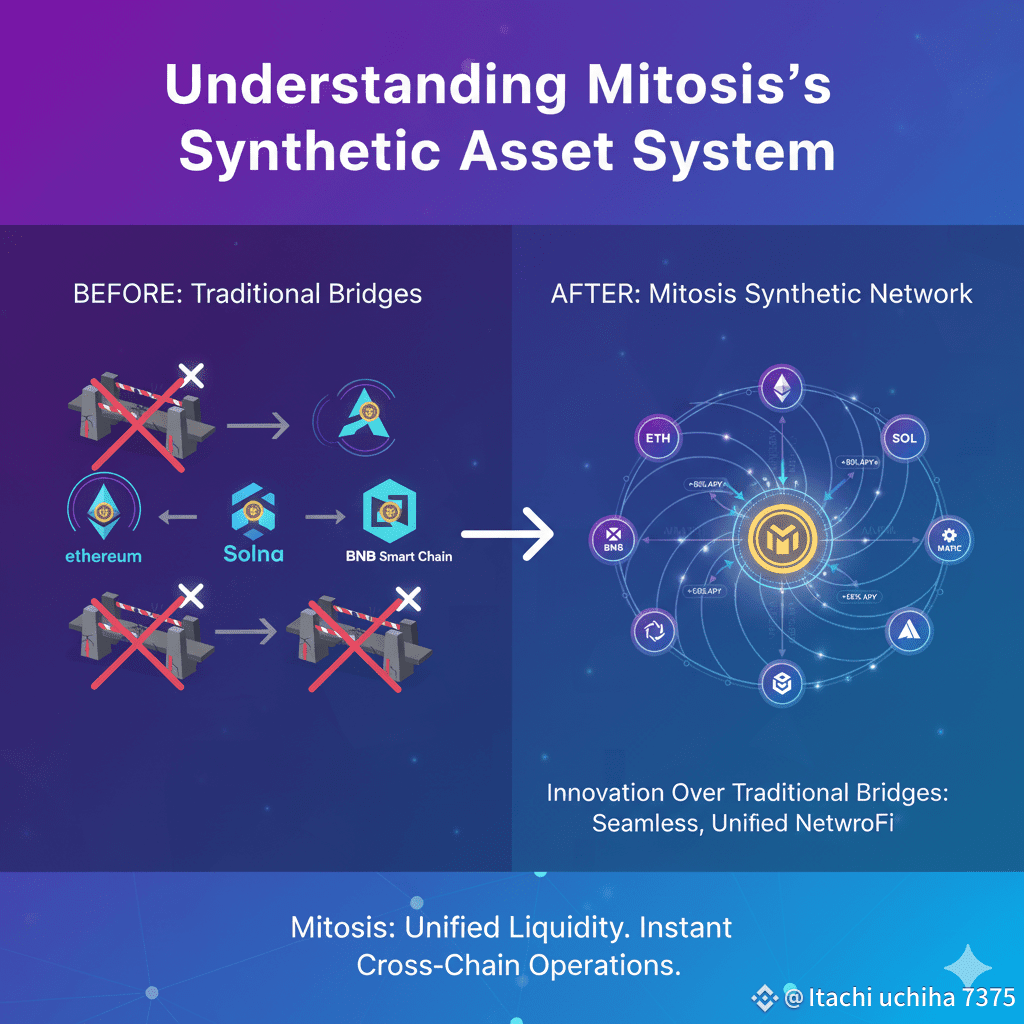
Moving assets between blockchains traditionally requires bridges that physically transfer tokens, creating security vulnerabilities and fragmentation. Mitosis employs a sophisticated synthetic asset system that represents the same underlying collateral across multiple chains simultaneously—enabling cross-chain presence without constant bridging.
The Bridge Vulnerability Problem
Traditional cross-chain bridges lock assets on one chain and mint wrapped versions on another. This creates single points of failure—if the bridge is exploited, billions in value can disappear. The history of DeFi is littered with bridge hacks precisely because they concentrate enormous value in vulnerable smart contracts.
Synthetic Representation vs Physical Transfer
Rather than moving actual tokens between chains, Mitosis creates synthetic representations backed by collateral held in secure vaults. When you deposit ETH into Mitosis, the original ETH remains on Ethereum while synthetic versions become available on BNB Chain, Arbitrum, and other supported networks.
Cryptographic Proof of Backing
Every synthetic asset on Mitosis chains is backed by verifiable collateral. Cryptographic proofs allow anyone to confirm that synthetic tokens correspond to real assets locked in vaults—no trust required. The blockchain itself enforces this one-to-one backing relationship.
Multi-Chain Simultaneity
Unlike bridges where assets exist on only one chain at a time, Mitosis synthetics exist simultaneously across all supported chains. Your deposited ETH has valid representations on Ethereum, BNB Chain, and Arbitrum at the same time—true multi-chain presence rather than sequential transfers.
Oracle-Free Verification
Many synthetic systems depend on price oracles that can be manipulated or fail. Mitosis's synthetic assets don't require external price feeds for basic operations—the backing relationship is maintained through on-chain verification of vault reserves and synthetic token supply.
Redemption Mechanisms
Synthetic assets remain redeemable for underlying collateral at any time. Users can burn synthetic tokens on any chain and withdraw the original assets from the vault—ensuring synthetics maintain value parity with their collateral through arbitrage opportunities if prices diverge.
Collateralization Ratios
To maintain security, Mitosis may over-collateralize synthetic positions. If 100 ETH backs synthetic representations, the protocol might only allow 95 ETH worth of synthetics to circulate, creating a safety buffer against volatility or unexpected events.
Cross-Chain State Synchronization
When synthetic assets move or are used on one chain, other chains must update their understanding of total synthetic supply. Mitosis employs secure messaging protocols that synchronize state across chains, ensuring consistent accounting without requiring centralized coordination.
Preventing Double-Spending
A critical challenge with synthetic systems is preventing the same collateral from backing more synthetic tokens than it should. Mitosis uses coordinated validation across chains where validators verify that total synthetic issuance never exceeds vault collateral.
Composability Across Chains
Synthetic assets function identically to native tokens on each chain where they exist. DeFi protocols on BNB Chain can accept Mitosis synthetic ETH just like any other token, enabling composability without requiring protocols to understand cross-chain complexities.
Liquidation and Risk Management
If collateral value drops relative to synthetic obligations, Mitosis implements liquidation mechanisms similar to lending protocols. This protects the system by ensuring synthetics remain backed even during market volatility.
Gas Efficiency Benefits
Creating synthetic representations is often more gas-efficient than bridging. Rather than paying bridge fees and destination chain transaction costs every time you want to move capital, synthetics provide presence everywhere with minimal ongoing costs.
Eliminating Bridge Dependency
By not relying on traditional bridges, Mitosis removes dependency on third-party infrastructure that could fail, be exploited, or become congested. The synthetic system operates through Mitosis's own validated protocol rather than external bridge contracts.
Scalability of Cross-Chain Operations
As more chains integrate with Mitosis, synthetic assets automatically gain presence on those chains without requiring new bridges or infrastructure. The synthetic model scales more elegantly than point-to-point bridge networks.
The Evolution of Cross-Chain Assets
Synthetic assets represent the maturation of cross-chain technology—moving from risky bridges to sophisticated representation systems that maintain security, verifiability, and efficiency simultaneously.

True cross-chain infrastructure isn't about moving assets constantly between chains—it's about creating systems where assets exist everywhere at once, backed by cryptographic guarantees rather than fragile bridges.



